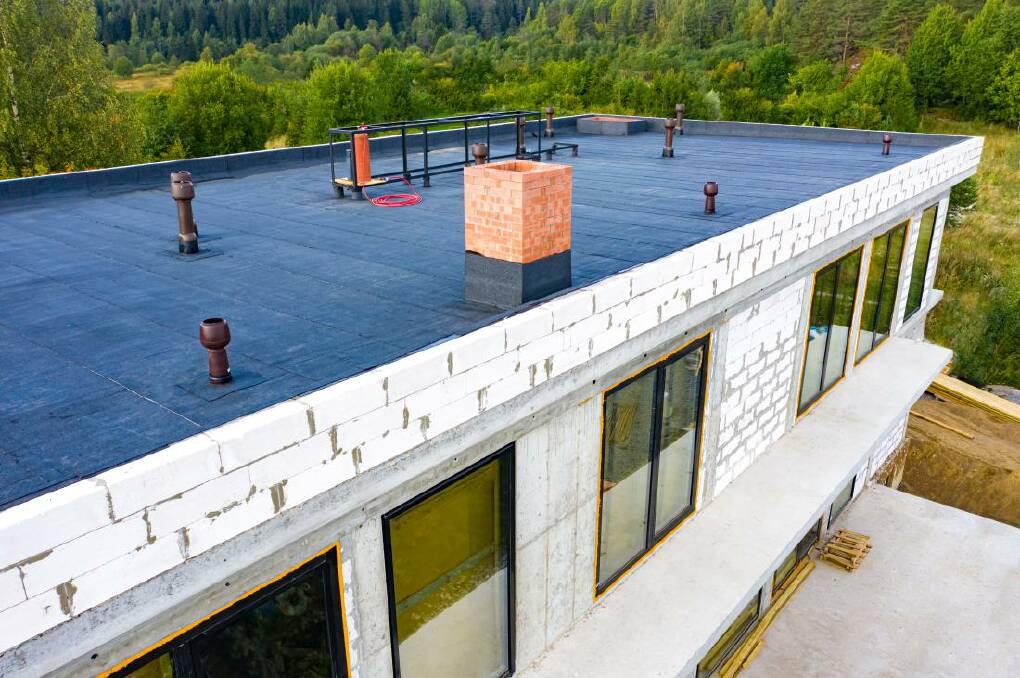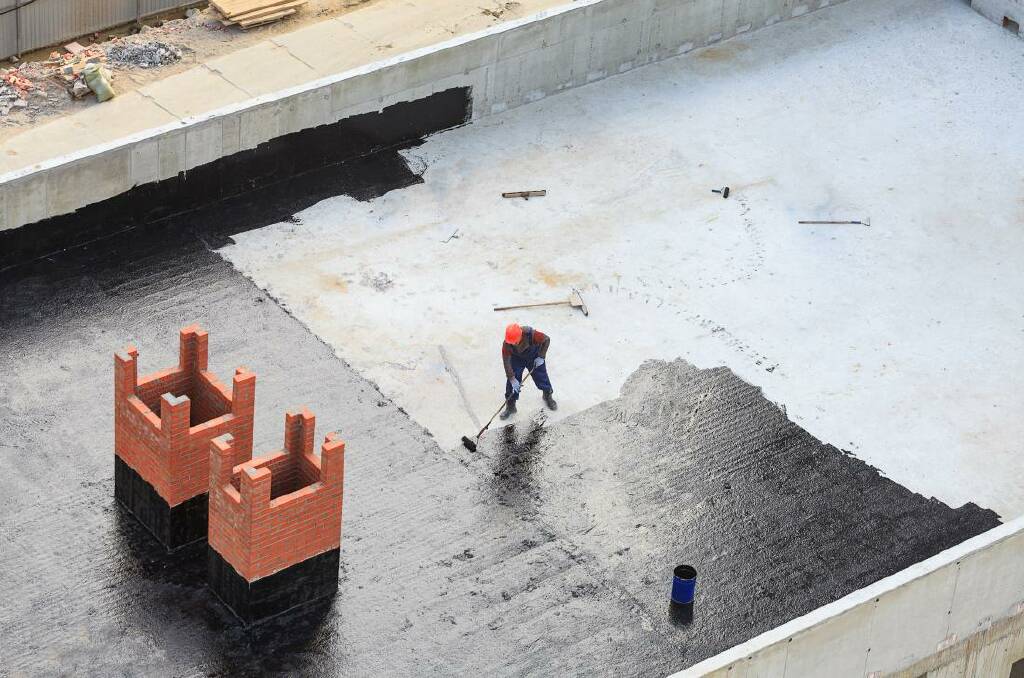How does a waterproofing membrane work

This is sponsored content for Ardex Australia.
Usually, people use waterproofing membranes over balconies, terrace slabs, concrete water tanks, swimming pools, in gutters, concrete decks, around basements, and in toilets. They're designed to offer added protection against harsh weather, atmospheric agents, ageing, sunlight, and hydrostatic pressure. Also, waterproofing membranes protect a surfaces from pollutants, like acid, alkali, and even chemicals.
In this article, you'll learn how a waterproofing membrane works.
What is a waterproofing membrane?
A waterproofing membrane refers to a continuous, thin layered watertight material laid over a surface that restricts water from passing through it. An example of a waterproofing membrane application is laying it below finished tiles or above the structural slab of a flat terrace.
Waterproofing membranes can stretch and move with the building, thus making them a great long-term option for preventing leakage. This elongation is usually measured in percentages. For example, a 150 per cent elongation means that the waterproofing membrane can stretch up to 1.5 times its original length when pulled. Some brands of waterproofing membranes can stretch with over 200 per cent elongation.
The following buildings benefit immensely from high-quality waterproofing membranes:
- High-rise buildings: Waterproofing membranes stretch over future cracks, so they're great in large high-rises. One type of waterproofing membrane commonly used on high rises is a polyurethane modified waterproofing membrane (liquid-applied) covered with protective plaster.
- Steel-made buildings: Waterproofing membranes stop leaks in steel-made buildings, so they're a great leakage prevention method. Learn more about this topic below.
Avoid Moisture Problems
Metal buildings hate moisture, as the damage it causes may lead to leaks, and small drips may cause major structural problems without proper treatment. Waterproofing membranes protect metal buildings from the following forms of water damage:
- Unsightly metal rust and corrosion
- Mold and mildew problems causing poor indoor air quality
- Funky odours
- Soggy insulation
- Insect infestations
- Damage to the structure
- Premature aging causing the decreased value of the building
Other waterproofing solutions implemented for metal buildings include installation of gutters and downspouts, overhangs, pipe boots, standing seam roof panels, and higher roof pitch.
Withstands wear and tear
Waterproof membranes are abrasion-resistant. Because of this, they're often used during construction, wherein workers walk on unfinished surfaces, drop nails and screws, and scrape hard objects, such as rebar, against the waterproof membrane. Soft, non-waterproof membranes typically have low abrasion resistance, causing them to leak when damaged.

There are liquid waterproof membranes for all shapes
Some forms of waterproof membranes are in liquid form, brush-applied or sprayed on the surface. These waterproof membranes cure in the air, forming a joint-free membrane, which avoids gaps between the membrane and the underlay. This makes them a useful solution on unusually-shaped surfaces, unlike traditional sheet waterproof membranes that may not fit.
Here are some other facts about liquid waterproof membranes:
- Liquid-applied membranes with the right thickness are superior to sheet-based waterproof membranes because they leave the surface joint-free.
- Installation of liquid membranes is quick. An entire surface area can be waterproofed in just one day.
- Overlapping a new membrane over cold joints and old membranes is possible as it sticks itself readily.
- Adhesion of waterproof membranes to concrete must be thick enough to avoid breaking or tearing.
Offers good resistance to chemicals
Trusted brands of waterproof membranes offers good resistance to acid, alkali, grease, and different industrial chemicals. Factories, parking decks, storehouses, laboratories, and offices all need waterproofing to avoid the damages potentially caused by these chemicals.
Releases water in the air
Waterproof membranes should be breathable. One disadvantage of some waterproofing methods is that water being trapped inside a waterproof structure that cannot exit, which causes internal damage.
Using a waterproof membrane designed to prevent the passing of water is highly recommended. Breathable waterproof membranes allow evaporation of trapped water into the atmosphere to preserve structural integrity.
Cures to form flexible and tough membrane
Low-viscosity liquid polyurethane cures to form a permanently flexible and tough waterproof membrane, resisting wear and increased impact. Self-levelling membranes are easy to apply. Choose a waterproofing membrane that adheres to a broad range of substrates without bitumen, tar, and bleed through. Also, opt for one with low volatile organic compounds (VOC) and that's non-flammable.
Conclusion
A waterproof membrane works by sealing a surface to avoid water leaks, chemicals, heat, and other substances from coming in contact with the surface underlay. It can withstand tear, breaking, and even releases water into the atmosphere as vapor to ensure a longer lasting structure. Waterproofing membranes come in liquid and sheet forms. Their applications differ depending on the waterproofing needs of a surface or building, but both are incredibly effective.
This is sponsored content for Ardex Australia.


